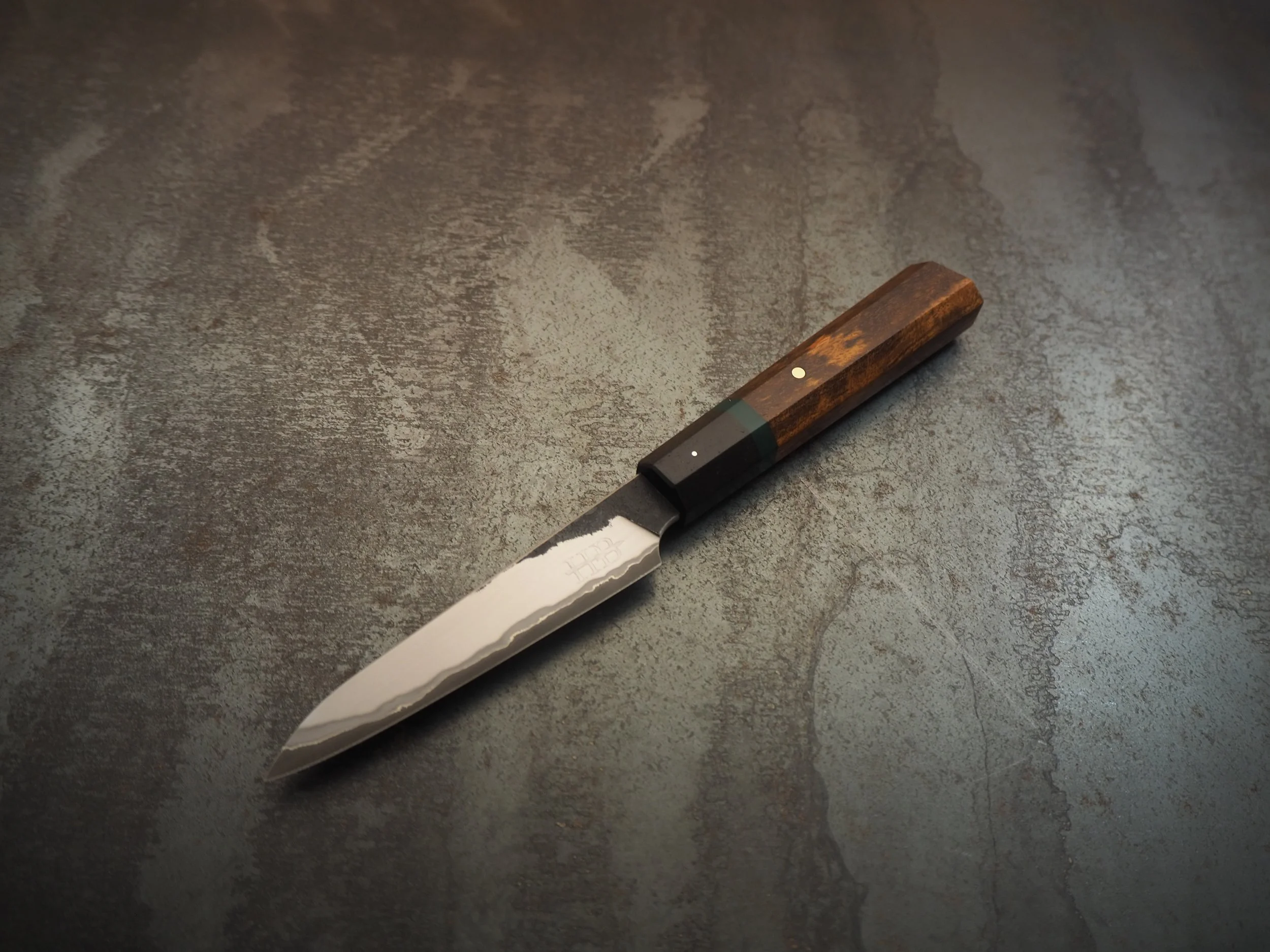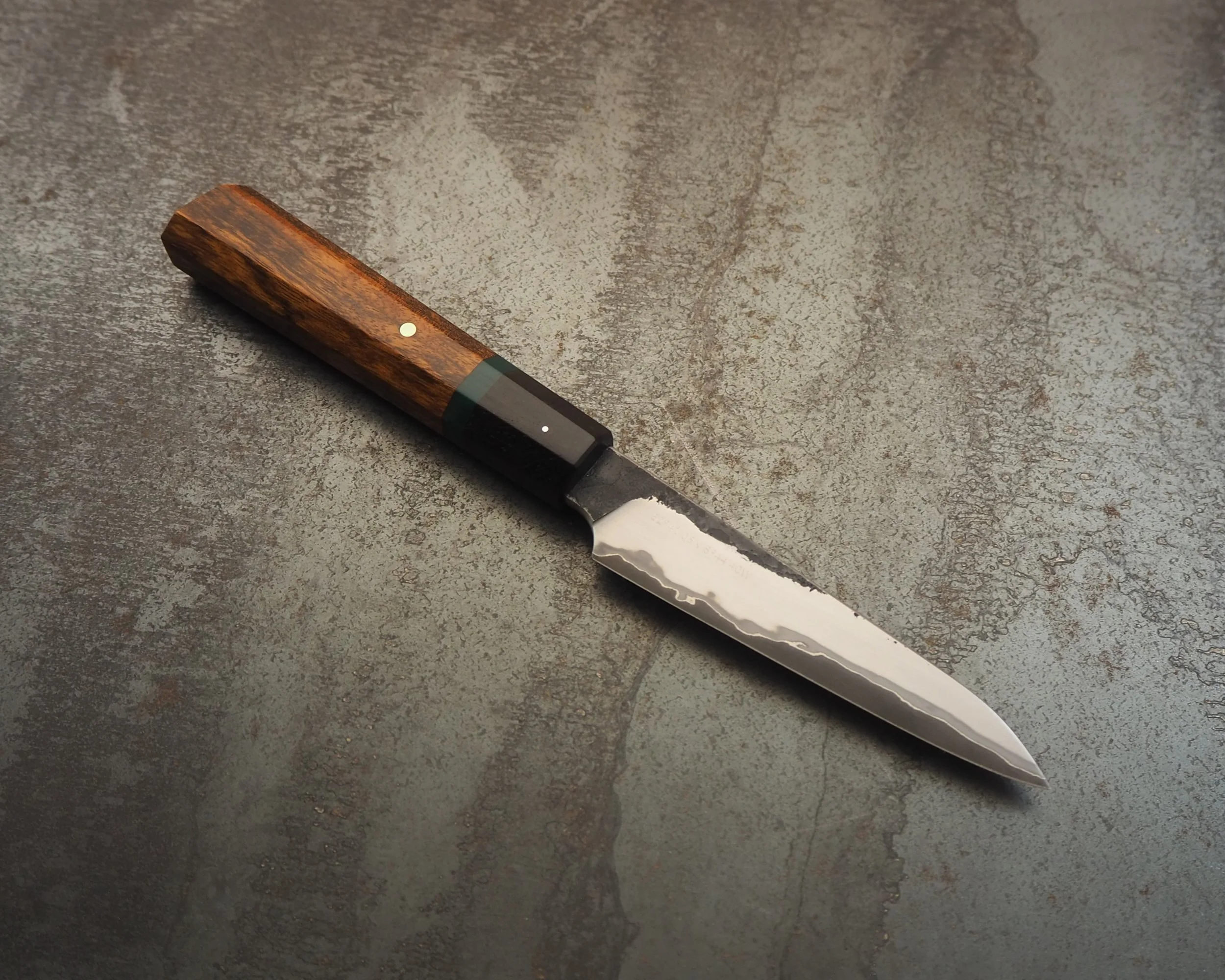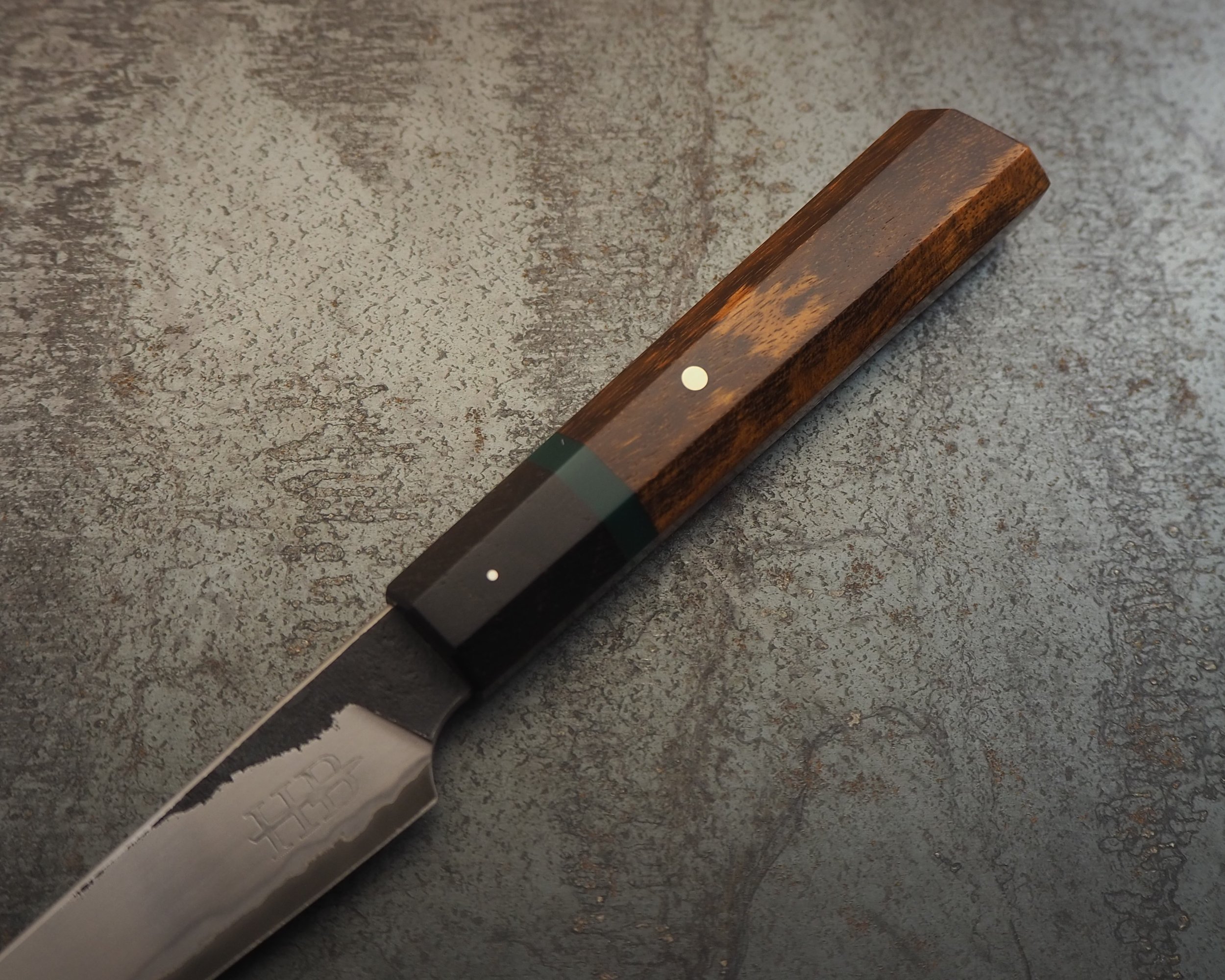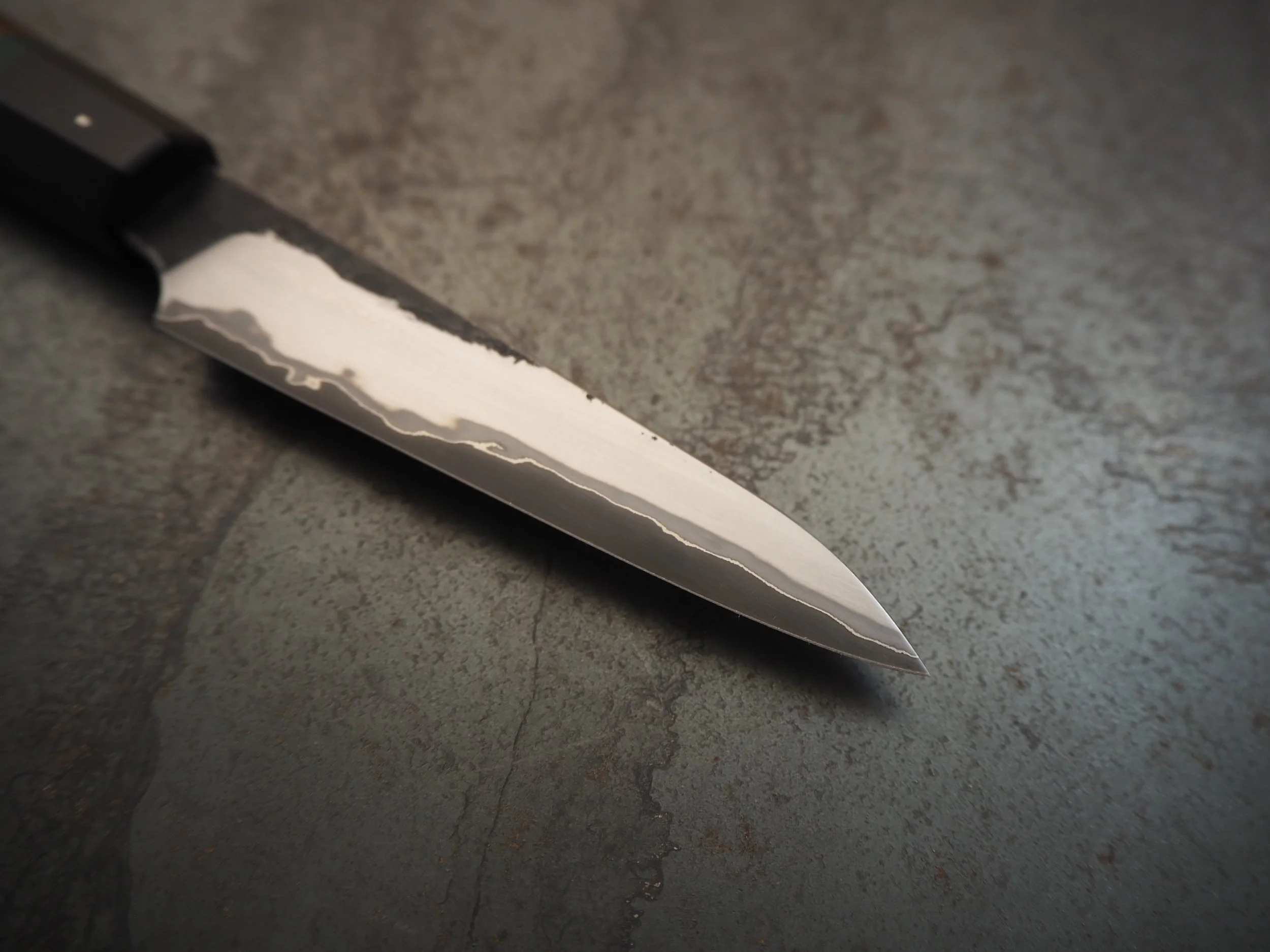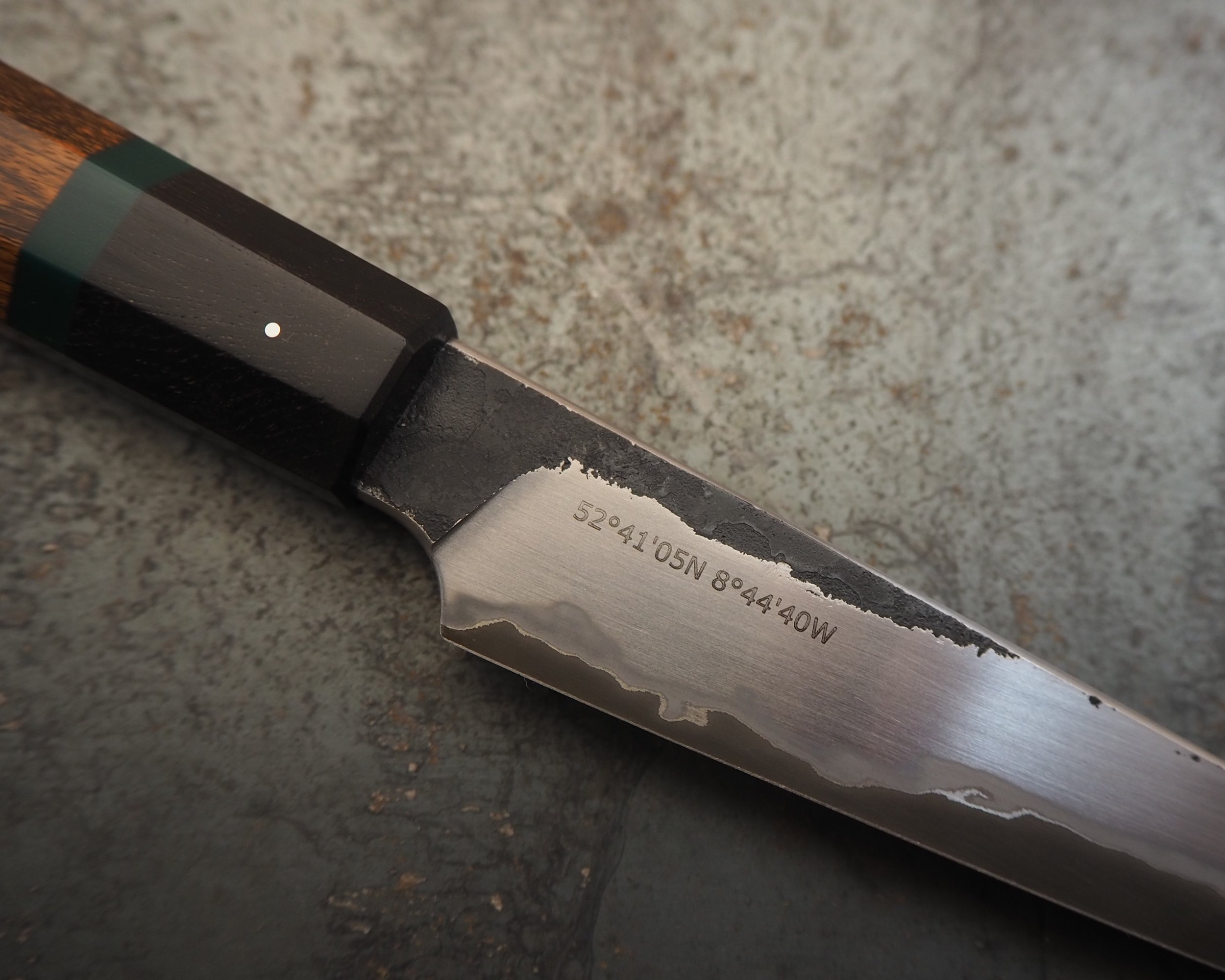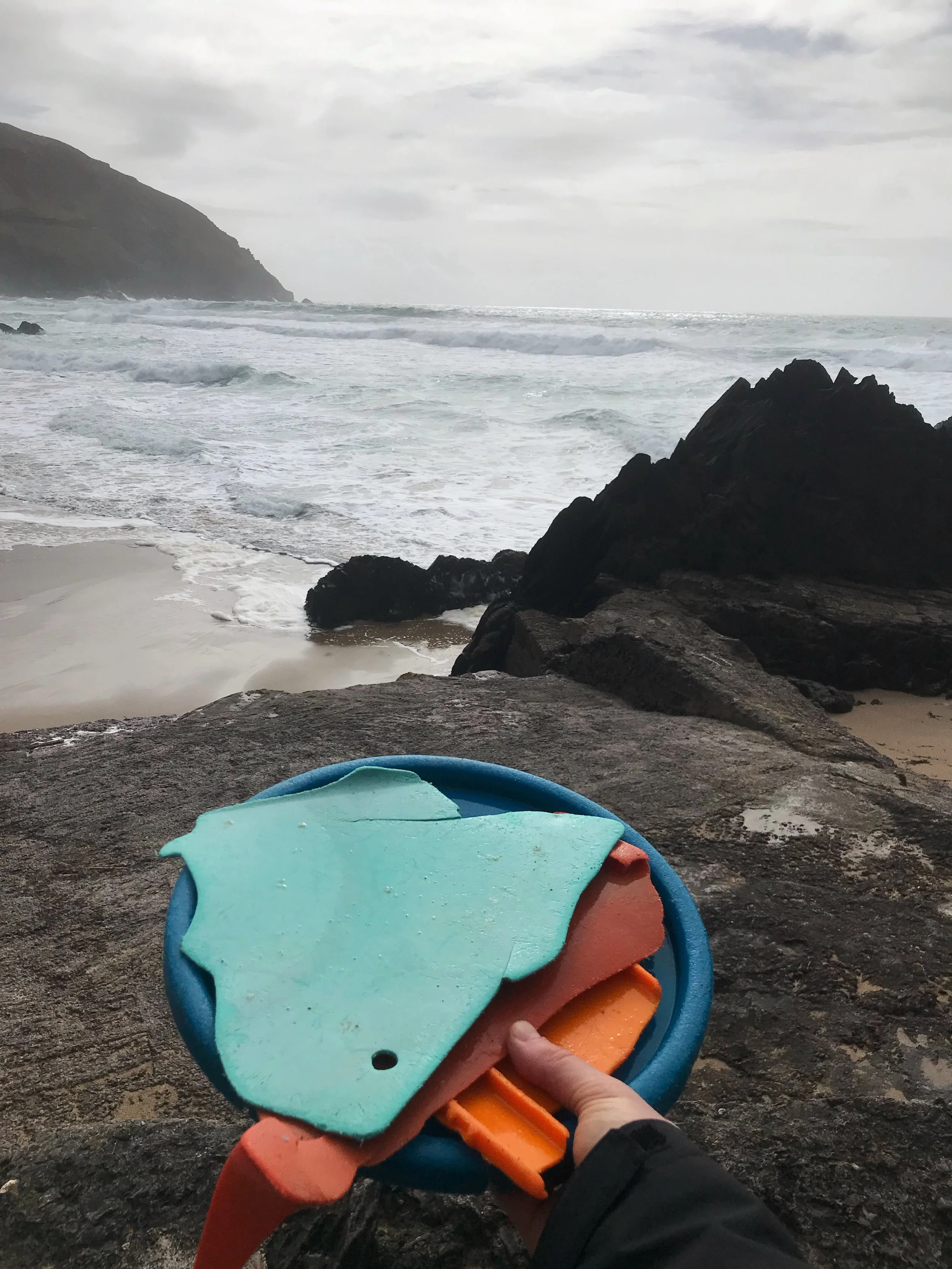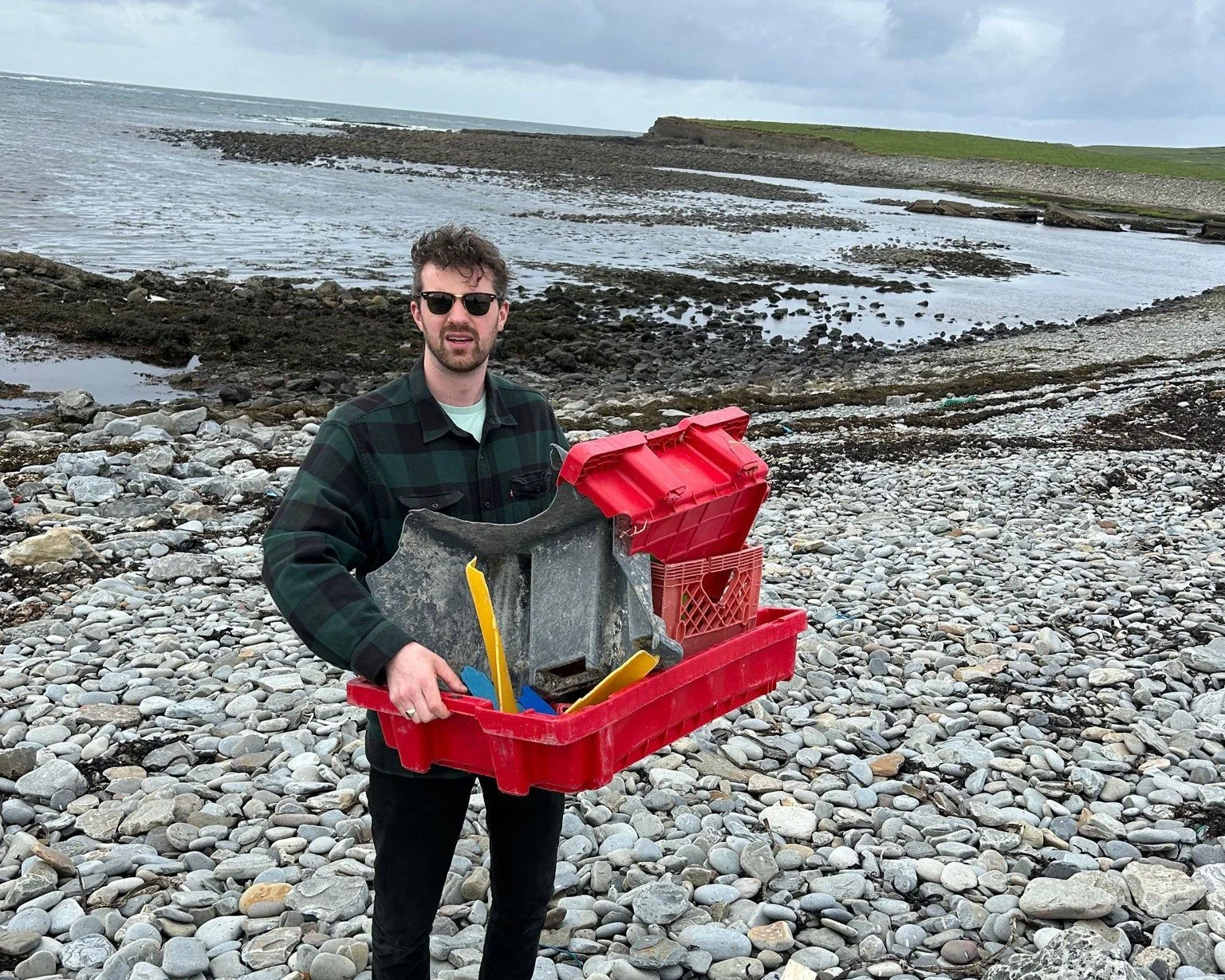Paring
The blade of this Paring knife is made of multiple layers of different steels. Known as San Mai, it is formed by forge welding contrasting layers of steel together under immense pressure and heat. In this case, a cutting core of Aogami Super Blue high carbon steel is sandwiched between layers of stainless steel. This allows for a very hard, razor sharp cutting core, protected on either side by a softer jacket. As the blade was ground and polished, the cutting core was revealed, with each distortion in the pattern representing a different blow of the hammer during forging.
The edges of the spine and choil are softened for comfort in use, and the upper flats of the knife have been left with a “brut de forge” finish to celebrate how the blade was created. The cutting edge is relatively straight with a very gentle curve and fine tip.
The handle is made of ancient Bog Oak from Glenstal Abbey and brazilian Rosewood that was found in a farm fence post in Co. Clare, with dark green Atlantic Ocean plastic from Coumeenoole Beach in Co. Kerry, brass, and sterling silver pins. It is faceted and fits the hand nicely, making this knife ideal for off the board cutting.
Map coordinates: 52°41'05N 8°44'40W (Cratloe, Co. Clare)
Blade length: 90mm
Overall length: 200mm
Weight: 53g
Balance point: Just above the green stripe.
The blade of this Paring knife is made of multiple layers of different steels. Known as San Mai, it is formed by forge welding contrasting layers of steel together under immense pressure and heat. In this case, a cutting core of Aogami Super Blue high carbon steel is sandwiched between layers of stainless steel. This allows for a very hard, razor sharp cutting core, protected on either side by a softer jacket. As the blade was ground and polished, the cutting core was revealed, with each distortion in the pattern representing a different blow of the hammer during forging.
The edges of the spine and choil are softened for comfort in use, and the upper flats of the knife have been left with a “brut de forge” finish to celebrate how the blade was created. The cutting edge is relatively straight with a very gentle curve and fine tip.
The handle is made of ancient Bog Oak from Glenstal Abbey and brazilian Rosewood that was found in a farm fence post in Co. Clare, with dark green Atlantic Ocean plastic from Coumeenoole Beach in Co. Kerry, brass, and sterling silver pins. It is faceted and fits the hand nicely, making this knife ideal for off the board cutting.
Map coordinates: 52°41'05N 8°44'40W (Cratloe, Co. Clare)
Blade length: 90mm
Overall length: 200mm
Weight: 53g
Balance point: Just above the green stripe.
The blade of this Paring knife is made of multiple layers of different steels. Known as San Mai, it is formed by forge welding contrasting layers of steel together under immense pressure and heat. In this case, a cutting core of Aogami Super Blue high carbon steel is sandwiched between layers of stainless steel. This allows for a very hard, razor sharp cutting core, protected on either side by a softer jacket. As the blade was ground and polished, the cutting core was revealed, with each distortion in the pattern representing a different blow of the hammer during forging.
The edges of the spine and choil are softened for comfort in use, and the upper flats of the knife have been left with a “brut de forge” finish to celebrate how the blade was created. The cutting edge is relatively straight with a very gentle curve and fine tip.
The handle is made of ancient Bog Oak from Glenstal Abbey and brazilian Rosewood that was found in a farm fence post in Co. Clare, with dark green Atlantic Ocean plastic from Coumeenoole Beach in Co. Kerry, brass, and sterling silver pins. It is faceted and fits the hand nicely, making this knife ideal for off the board cutting.
Map coordinates: 52°41'05N 8°44'40W (Cratloe, Co. Clare)
Blade length: 90mm
Overall length: 200mm
Weight: 53g
Balance point: Just above the green stripe.
It is important to mention that carbon steel blades require a little more care and maintenance than stainless steel, but you will be rewarded with a rich patina that will illustrate the knife’s history with you over a lifetime of use. Each knife comes with instructions on how to look after it.

